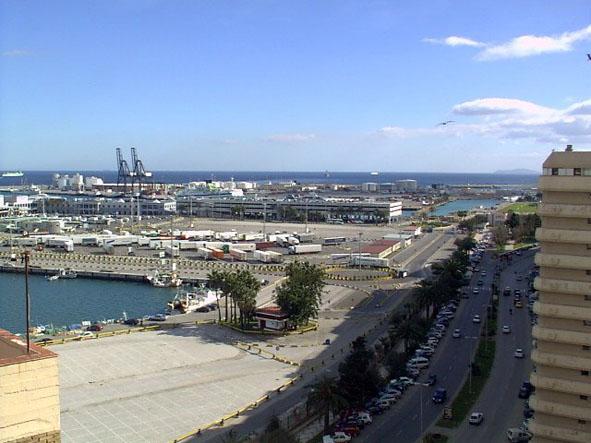Algeciras

Located to the extreme west of the bay of the same name, opposite Gibraltar, it has, due to its geographic situation, always been an important maritime centre, both in strategic and commercial terms, offering complete control of the Straits.
Part of the municipal area belongs to Los Alcornocales Natural Park, one of Andalusia's largest and of great ecological, scenic and hunting value.
With its long marine tradition, the presence of numerous industries in the bay means that not all of its 23 kilometres of beaches can be enjoyed by tourists, though some are of great interest, such as El Rinconcillo, San García and Getares.
The economic mainstay of this now modern city is its port, one of Spain's most important. Monuments of interest are the Nuestra Señora de la Palma Church and Nuestra Señora de Europa Chapel.
History
Algeciras, the natural link between Europe and Africa, has played a decisive role in the history of both continents since time immemorial; Greek mythology has it that Hercules opened up the straits between the two continents, erecting the famous "Columns of Hercules", one in Africa, Abyla (Djebel Muza), and the other at Calpe (Gibraltar).
Some authors believe that its origins lie in the Punic city of Carteia which, after being repopulated by Augustus, was given the name Iulia Traducta.
Its name, Al-gezirah al-jadrah, comes from Arabic and means "the green island", a reference to the small, leafy island that lies in the bay and is known as Isla Verde (Green Island) or Isla de las Palomas (Pigeon Island).
The city has always been a port of entry from Africa to the Iberian peninsula; history tells us that in 711 the Moslem chief Tarik, after defeating the Goth army led by Teodomiro, marched to meet King Rodrigo, whom he beat in the battle of La Janda, thus beginning the Moslem domination of Spain.
The city was to be an important port in the Arab world for more than six centuries; during this time the Christians tried to capture it on several occasions, and after a brief period under Christian control it was destroyed in 1369 by the King of Granada, Mohamed V, who considered it impossible to defend. It fell into Christian hands for good in 1344, when it was conquered by Alfonso XI, known as the Righteous.
In the 18th century it was inhabited again as a result of the English occupation of Gibraltar. The original nucleus of present-day Algeciras sprang up around Our Lady of Europe Chapel.
In 1906 the Algeciras Conference was held, in which the major European powers came together to determine how the Moroccan coast would be shared out.
Today, Algeciras is one of the most important ports in Europe in terms of both passengers and goods.
It has a municipal museum and can boast the Fandango de Algeciras as its contribution to the world of flamenco.
Eminent citizens
Mohamed ben Abdala-Abenamir, better known as Almanzor -"helped by Allah"-, vizier to Hixem II, caliph of Cordoba. Also called "the victorious", he defeated the Christians in over fifty campaigns, including such famous victories as the capture of Santiago de Compostela and the destruction of Barcelona.

- Max 19
- Min 13
- Max 66
- Min 55
- °C
- °F























